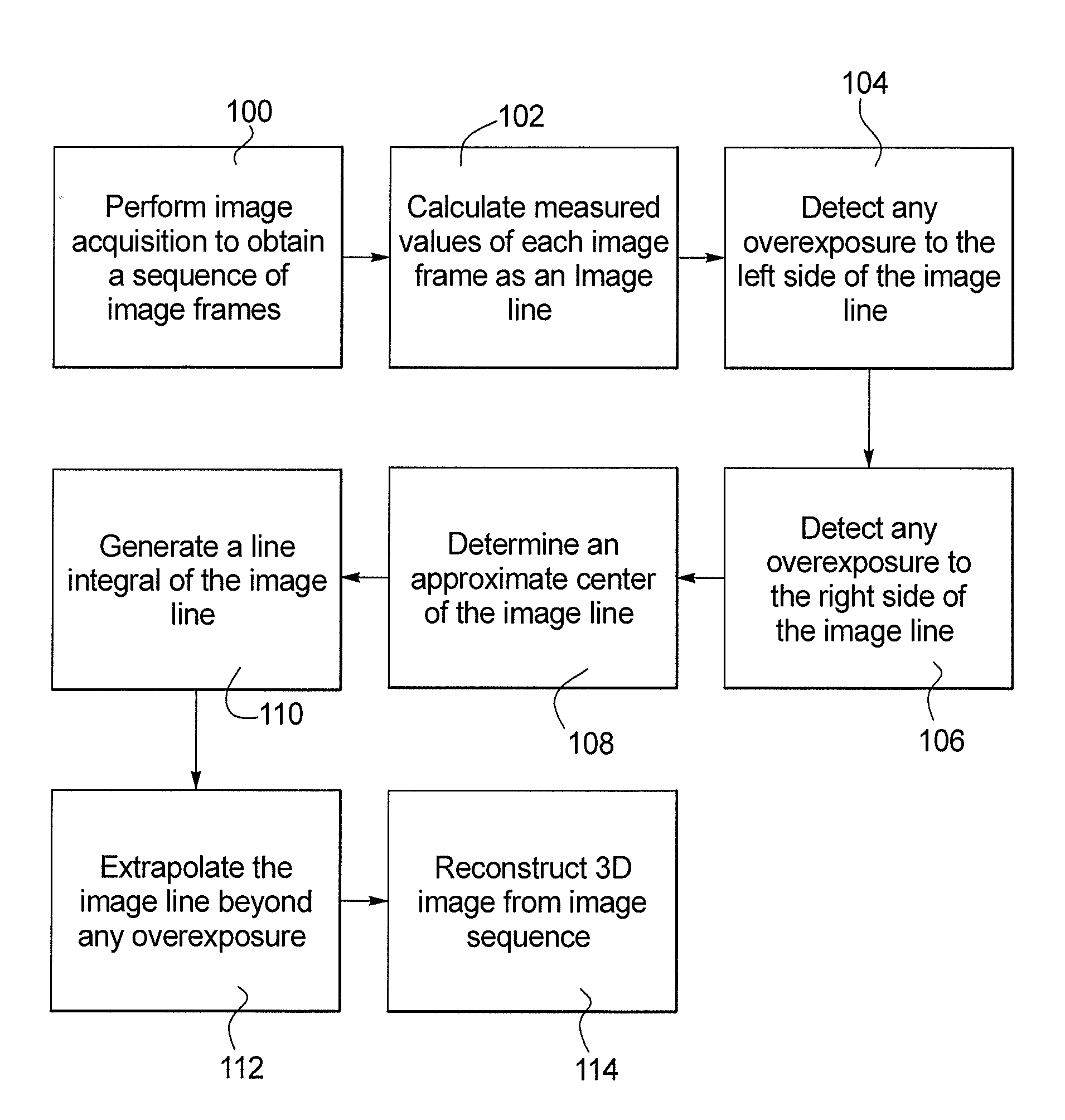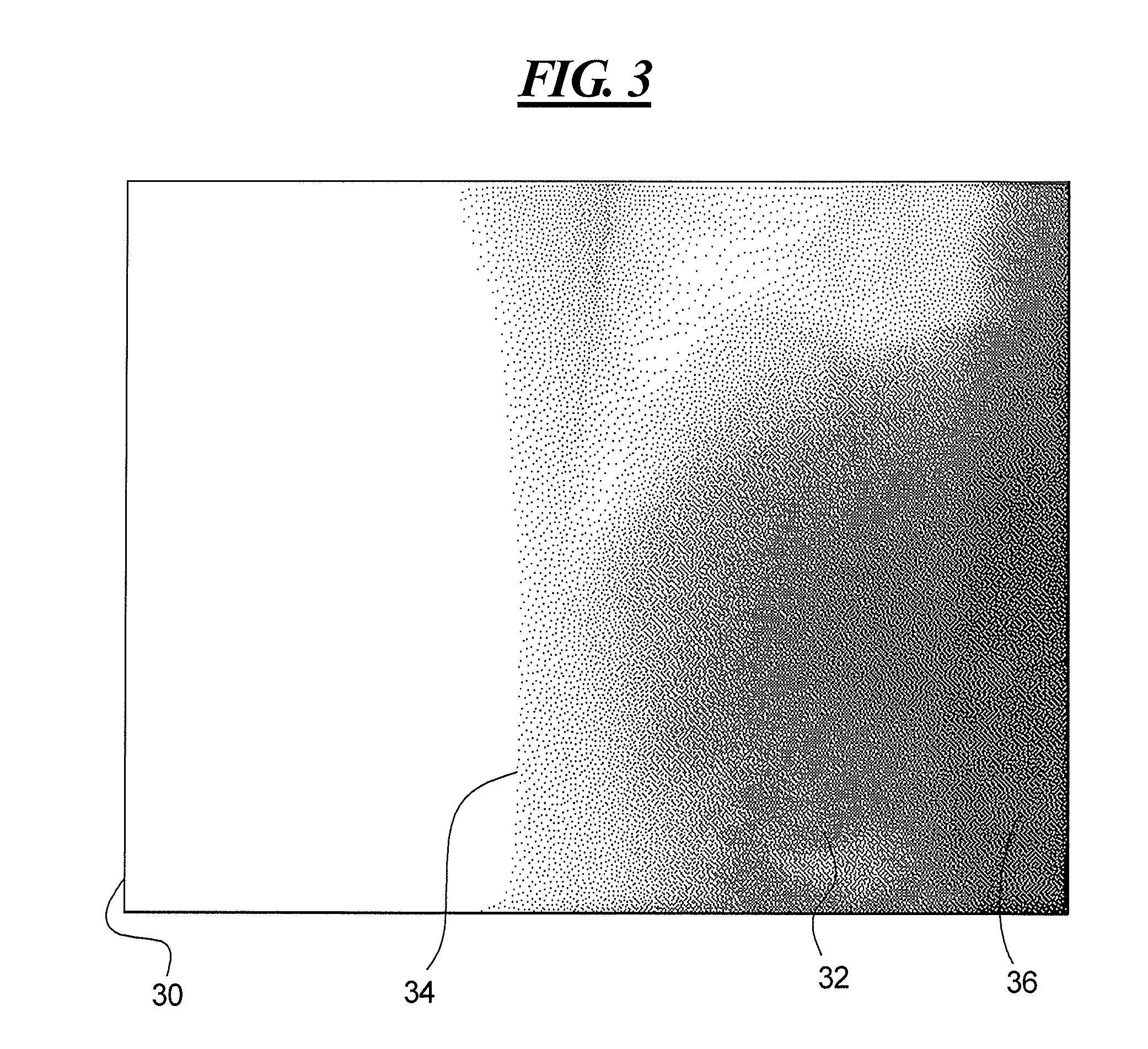Overexposure correction for large volume reconstruction in computed tomography apparatus
a computed tomography and overexposure correction technology, applied in the field of medical imaging, can solve the problems of unsatisfactory correction algorithm for so-called 3d large volume image acquisition, affect the use of 3d imaging that uses 2d, and affect the detection of low contrast objects, etc., to achieve good contrast resolution, improve the quality of reconstructed images, and reduce the effect of artifact levels
- Summary
- Abstract
- Description
- Claims
- Application Information
AI Technical Summary
Benefits of technology
Problems solved by technology
Method used
Image
Examples
Embodiment Construction
[0033]There is shown in FIG. 1 a graph showing capping effects at the edges of a projection image, as described in greater detail above. FIG. 2 is a schematic illustration of two pass imaging process for imaging a large volume object, as described above. FIG. 3 is an X-ray image of one side of a human torso showing that the left side of the image is lighter than the right side, as described above. FIG. 4 is an image slice of a reconstructed three-dimensional image obtained by two-dimensional projection imaging in two passes, as described in the foregoing.
[0034]Over-exposure correction according to the present method and system is determined according to an algorithm. The algorithm is performed by a programmed computer device or system. The algorithm uses values illustrated in FIG. 5. An object to be imaged is represented by a gray shaded oval that has a density μ({right arrow over (r)}). The intensity of the imaging beam is Io as shown by arrow 54 and a detector 56 is operable to se...
PUM
 Login to View More
Login to View More Abstract
Description
Claims
Application Information
 Login to View More
Login to View More - R&D
- Intellectual Property
- Life Sciences
- Materials
- Tech Scout
- Unparalleled Data Quality
- Higher Quality Content
- 60% Fewer Hallucinations
Browse by: Latest US Patents, China's latest patents, Technical Efficacy Thesaurus, Application Domain, Technology Topic, Popular Technical Reports.
© 2025 PatSnap. All rights reserved.Legal|Privacy policy|Modern Slavery Act Transparency Statement|Sitemap|About US| Contact US: help@patsnap.com



